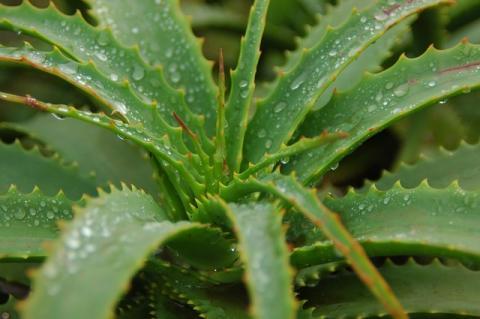
With the amazing summer climate, many of us find ourselves outdoors enjoying the beautiful weather. We are not alone in this enjoyment – insects will also be out and about more often. Occasionally, we humans and insects hang out in the same area, which sometimes leads to bites and stings.
Today’s walk through Mother Earth’s Medicine Cabinet will lead us down the bug bite relief section, which also includes healing for bee and wasp stings. Antihistamines will be a big help when it comes to relieving any swelling, itching, and redness, but there are several other options available in the medicine cabinet.
Before we begin, I’d just like to go over the importance of knowing the difference between a mild reaction and a severe reaction. Those of you allergic to wasps, bees, and other insects will have a more severe reaction that may require medical attention. Here are the signs and symptoms of each.
Symptoms of Mild Reactions
Most people’s bodies react to the venom or different proteins that insects leave behind through their stingers and saliva. The typical mild reactions consist of:
- Itching
- Swelling
- Pain
- Redness
- Irritation
Symptoms of Severe Reactions
If you or someone you know experiences the following signs or symptoms following an insect bite or sting it is important to seek medical assistance.
- Hives
- Nausea
- Vomiting
- Difficulty Breathing
- Shock
- Abdominal Pain
- Cramps
5 Natural Remedies For Insect Bites & Stings
The following 5 remedies are safe for both humans and animals alike.
- Baking Soda: Baking soda has so very many uses in and out of the kitchen. When it comes to bug bites it is the alkalinity in baking soda that is the healing hero due to the cooling effect. Not only is the alkalinity responsible for the cooling effect but it also neutralizes the acid left behind when you get stung. You can make a paste using water or apple cider vinegar. Just add enough of either liquid to form a thick paste and apply it to the affected area. Let the paste sit and work its magic for about 20 minutes before you wash it off. To avoid any infection, I suggest using a natural antibacterial soap like tea tree oil infused soap. Some insects such as ants and mosquitos can inject formic acid into the bite, which is what causes the irritation. The alkaline properties in the baking soda will neutralize the acidity, relieving the itch.
- Essential Oils: The uses for essential oils can seem endless when it comes to healing. Lavender, tea tree, neem, and chamomile essential oils are just a few that can be used to relieve the pain, swelling, and irritation of insect bites and stings. Tea tree and neem oil provide antibacterial, antiviral, antiseptic, and antimicrobial properties that help keep the area clean and free of any bacteria or infection. Tea tree oil also helps with the inflammation. Lavender and chamomile provide calming and soothing effects, which in turn help to relieve any itching, burning, and irritation. Lavender and tea tree oils also make good bug repellents!
- Aloe Vera: Aloe vera is one of the number one healing plants around, chosen for its natural soothing and cooling abilities. The vitamins A, C, and E are all good for the skin and contain antioxidants as well. The fatty acids found within Aloe vera provide four different plant steroids that possess anti-inflammatory properties, as well as antiseptic and analgesic properties. It is great for cooling bites and stings and relieving pain. Aloe vera also contains amino acids that are essential to humans.
- Apple Cider Vinegar: ACV has the same ability to neutralize bug bites as baking soda. This is because the both naturally balance the pH levels in our skin and in our bodies. You can just dab some ACV onto the affected area or soak in a bath using a few capfuls in a warm bath. (The bath is the better option when dealing with multiple bites.)
- Ice: A cold compress or ice pack helps ease the pain of bug bites or stings by numbing the area, as well as reducing any swelling. This is good for all bites and is great for removing stingers. The cold temperatures of the ice cause the area to tighten up which will help the body push the stinger out. If the stinger doesn’t come all the way out it should come out far enough to pull it the rest of the way out with tweezers. If the stinger is embedded further down in the skin, then you may have to work it out by pushing down on the area around it to help force it out.
Bug bites are no fun – and for some people, they can even be dangerous. Knowing how to naturally treat bug bites and stings will help you ease your way through summer -- less itching, scratching, stinging and burning, with more comfort and enjoyment. I hope this walk through the medicine cabinet finds you well and in a good way. Happy Healing!








